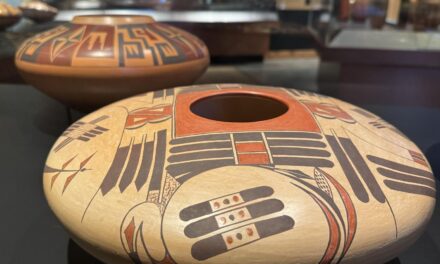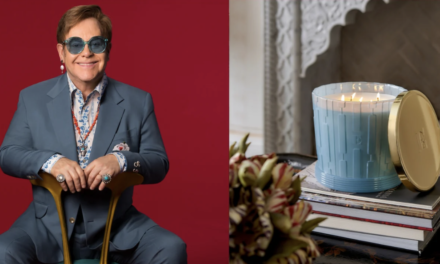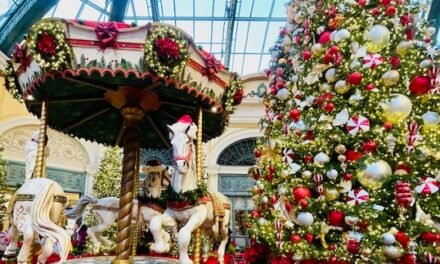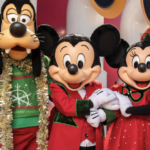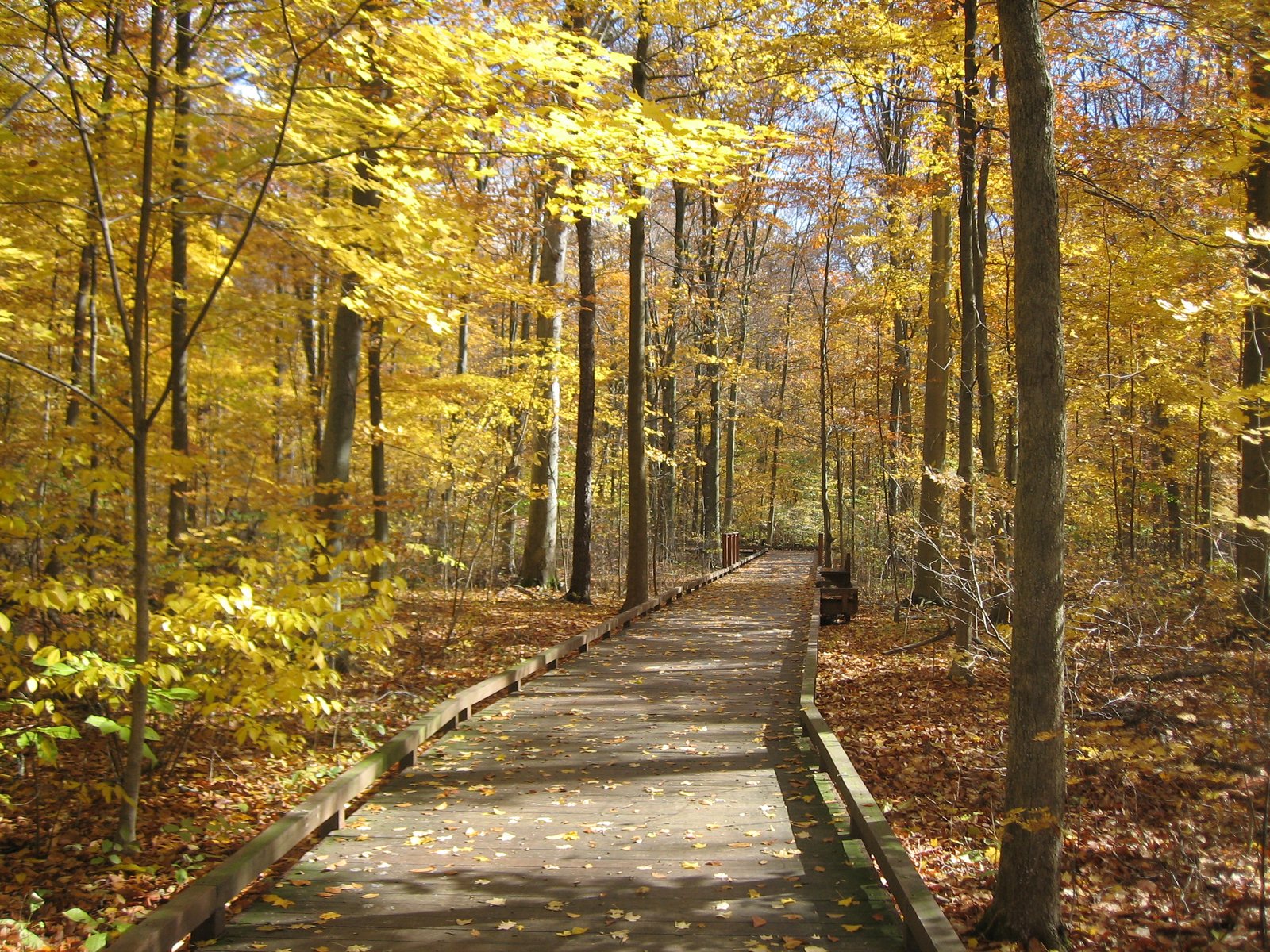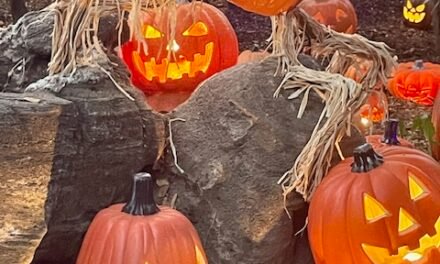
Western Spirit: Scottsdale’s Museum of the West showcases art, culture and a rich history
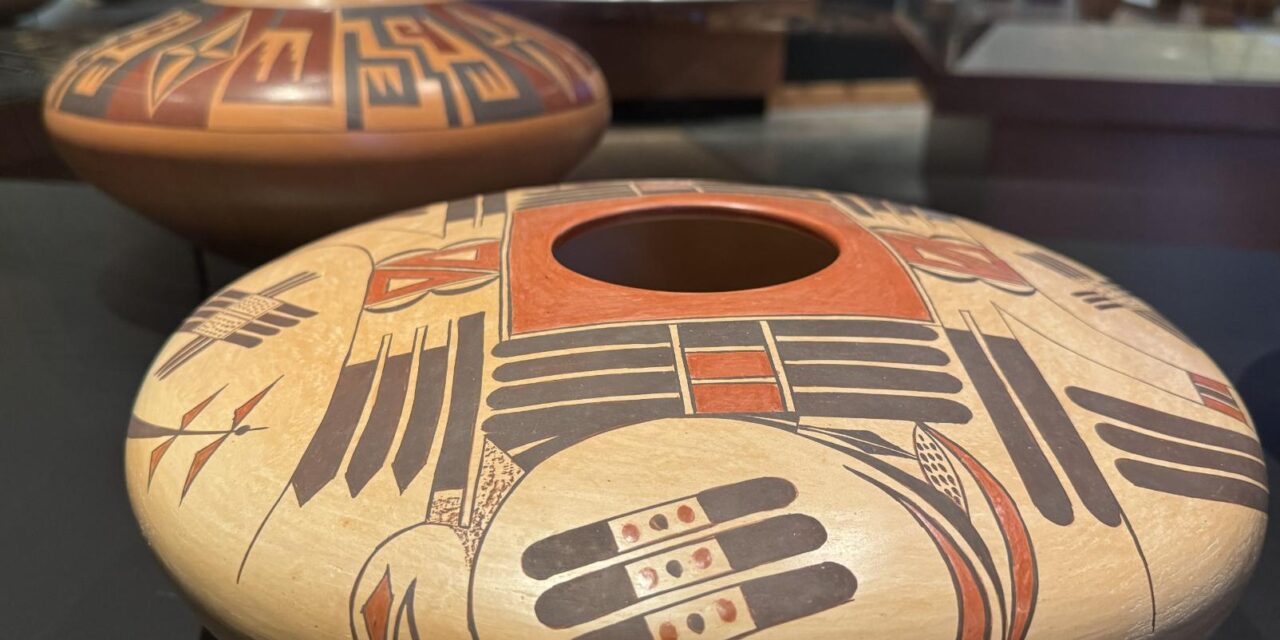
Old Town Scottsdale is a mecca for tourists, who flock here to shop for unique souvenirs, peruse the art galleries and public art installations, check out historic sites from the late 1880s and dine and imbibe at the many restaurants and watering holes. They also come to explore the world-class museums for a hearty dose of history and culture.
Among these museums is the top-rated Western Spirit: Scottsdale’s Museum of the West. This premier institution and architectural gem, which was established in 2015, encompasses 4,000 square feet within an expansive two-story layout. It strives to immerse visitors in the “unique story of the Greater Western region, illuminating the past to better shape our future.”
Galleries abound with paintings, sculptures, pottery, jewelry, memorabilia and artifacts galore that embody the West. It’s easy to spend a few hours viewing the numerous displays, as there’s much to see and read. And once you explore this place, it’s clear why the museum was selected 2023 Best Western Museum in the U.S. by True West Magazine.
You’ll drool over “Dazzling Array: The Richard A. Gates Collection of Native American Jewelry” with its elaborate cuffs, necklaces and more, created by award-winning artists like Larry Golsh, Charles Loloma and Jesse Monongya. Golsh, an accomplished jeweler and sculptor, is best known for his use of gold in Native American-inspired designs, many of them inspired by prehistoric rock art found in southern California, where he grew up. He embellishes his pieces with an array of luscious gemstones.
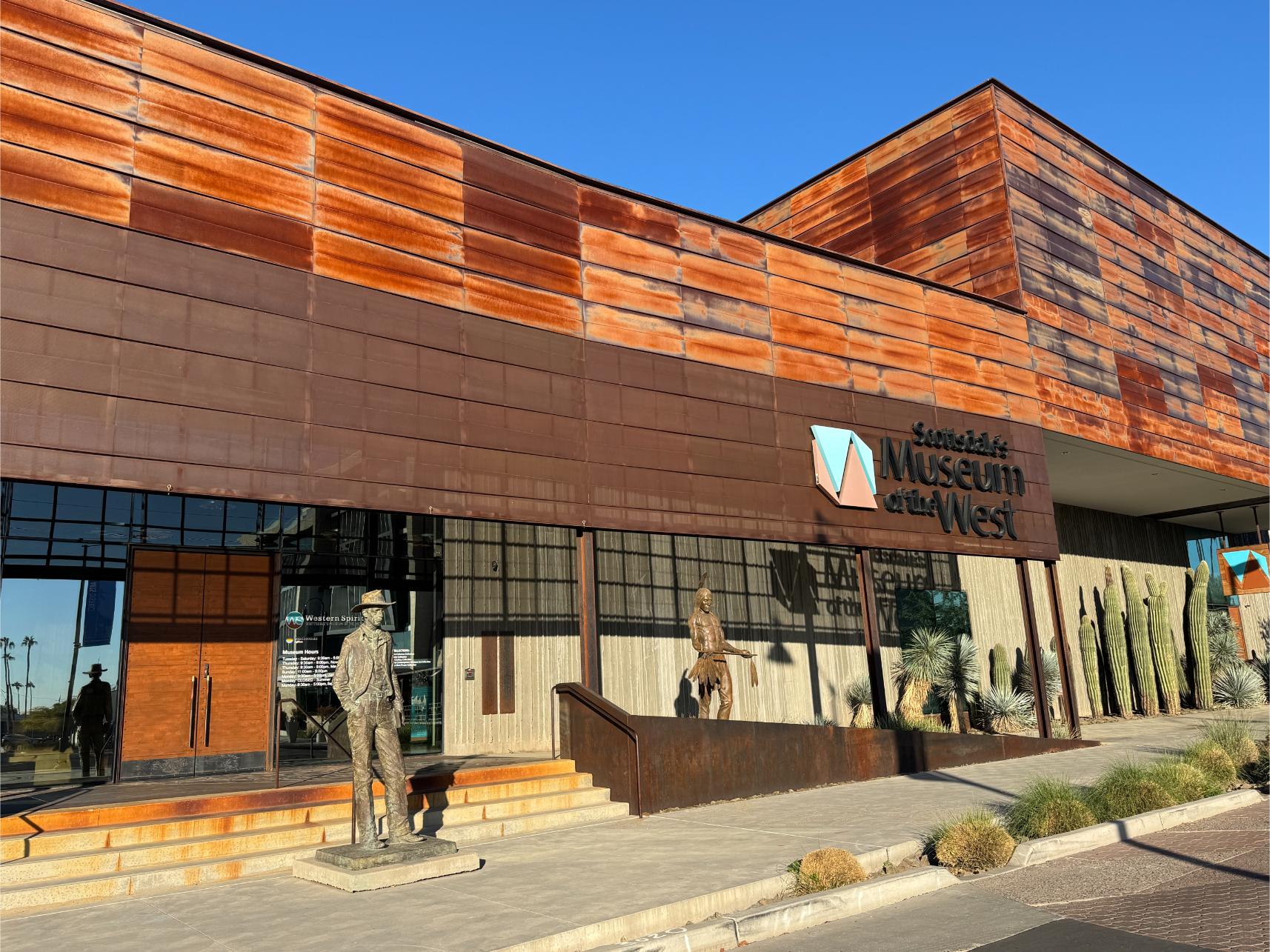
Welcome to Scottsdale’s Museum of the West. Photo by Debbie Stone
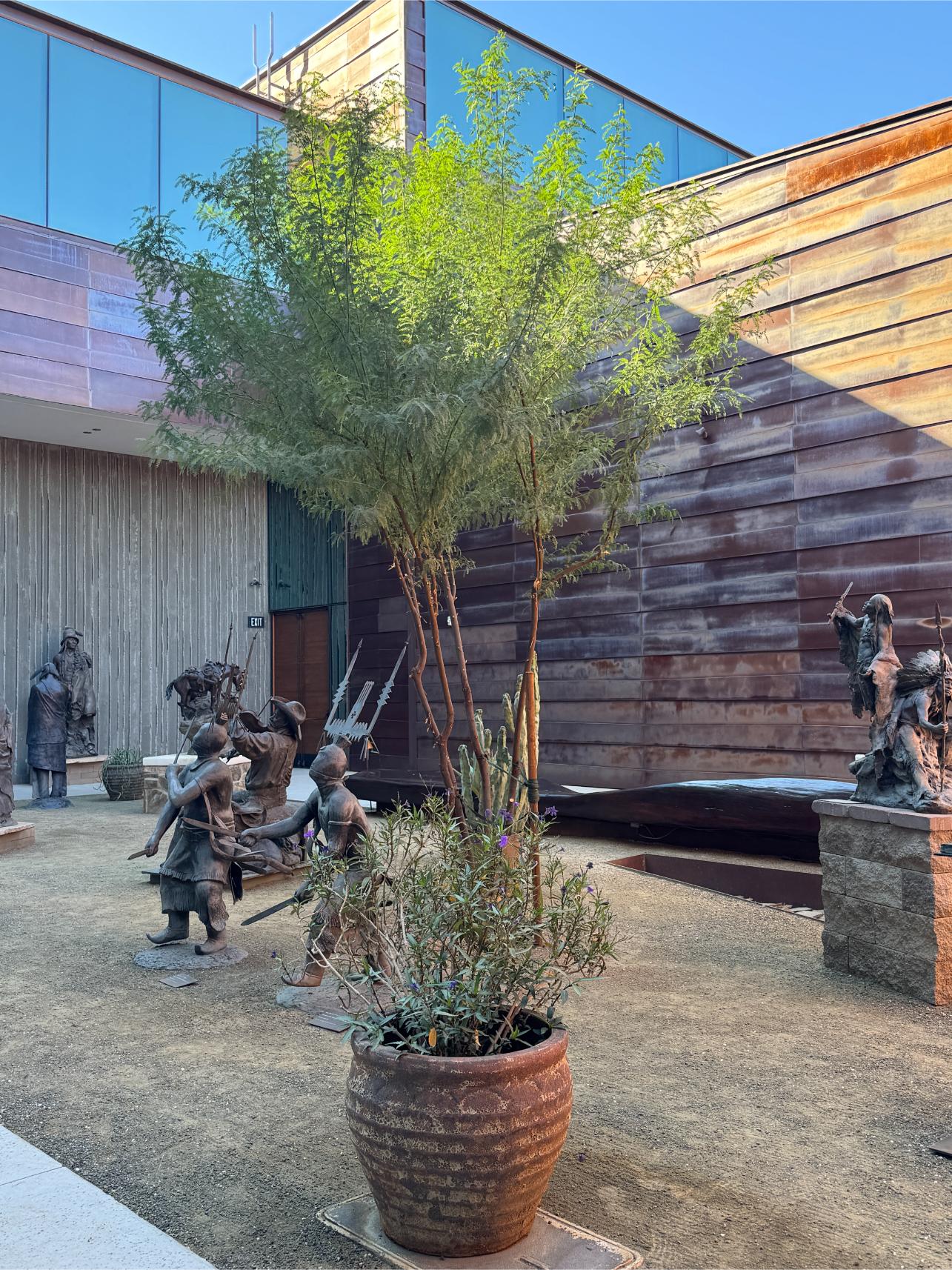
More art on display in the sculpture garden. Photo by Debbie Stone
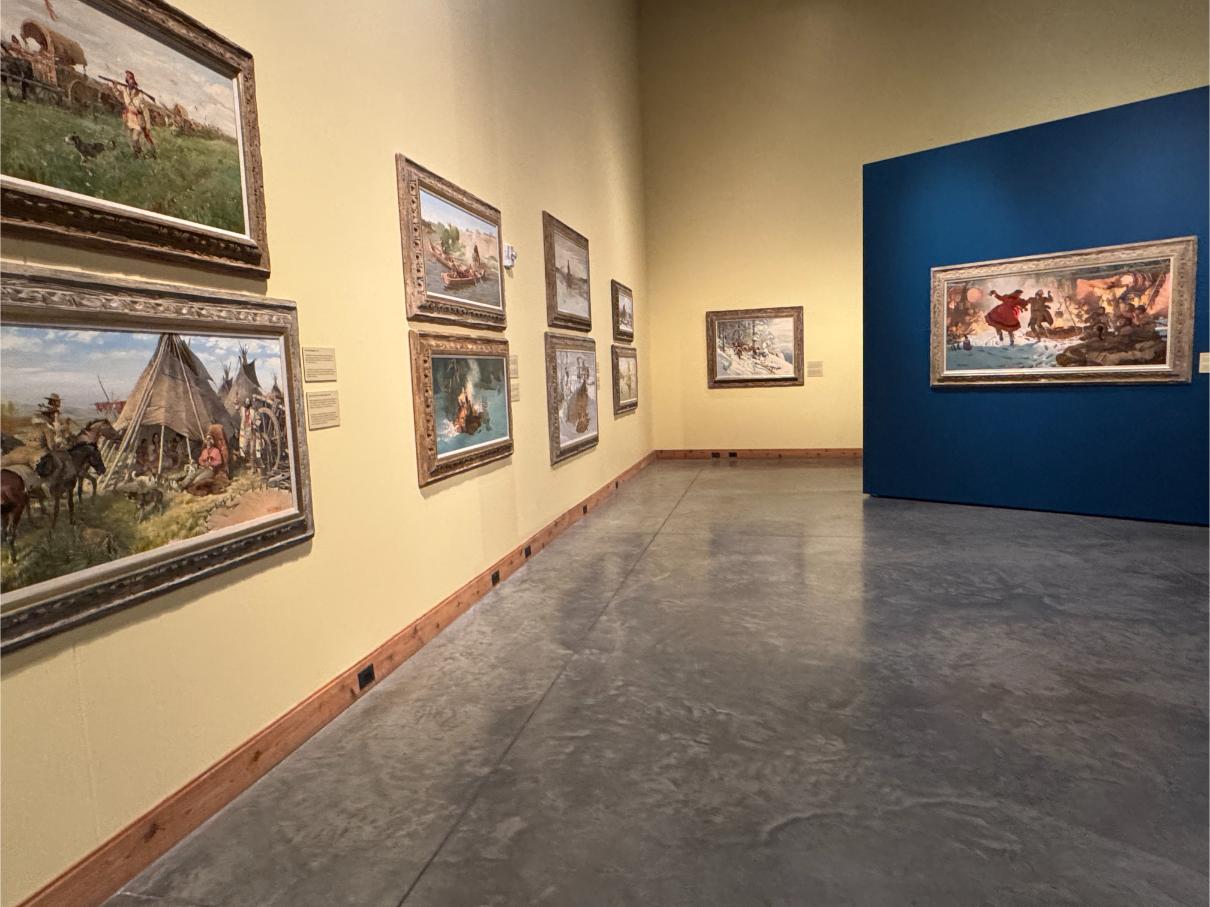
Paintings abound depicting the West. Photo by Debbie Stone
Interestingly, Golsh’s mentor was Charles Loloma, who is regarded as a leader in modern Native jewelry design. A master jeweler, Loloma’s work made him the most famous and widely collected Indian jeweler of all time. His bracelets, necklaces, pendants and more are works of art.
Monongya, also a master jeweler, specializes in intricate stone inlay with such gems as coral, turquoise, opal and lapis lazuli. He is well-known for his night-sky designs inlaid into a bear shape, symbolizing strength and power.
Pottery takes centerstage in “Canvas of Clay: Hopi Pottery Masterworks from The Allan and Judith Cooke Collection.” More than 65 examples of Hopi pottery are on display, celebrating six centuries of the Hopi people and culture. Among the pieces in this gallery are numerous ceramics by Nampeyo of Hano, the most famous of the Hopi potters. Nampeyo’s daughters’ work is also on display, along with other talented potters.
A video is included in the exhibit, which shows how this type of pottery is created. After watching it, you’ll have a better understanding of the complex process involved and the level of craftsmanship these artisans possess. It is a labor of love to make these hand-formed vessels, requiring repeated pinching and scraping of the clay body, then pit-firing the pieces.
“Women of the Southwest: A Legacy of Painting” puts women artists front and center in this gallery. Nearly 200 works by 25 women adorn the walls. As the exhibit points out, the artists assembled an “impressive list of firsts.” Lillian Wilhelm Smith, for example, was the first woman to paint the Rainbow Bridge, and the only woman illustrator of Zane Grey’s books. Another, Jessie Benton Evans, helped organize the first art show at the Arizona State Fair back in 1915. Her paintings were collected by the Santa Fe Railway, which had the first corporate art collection in America.
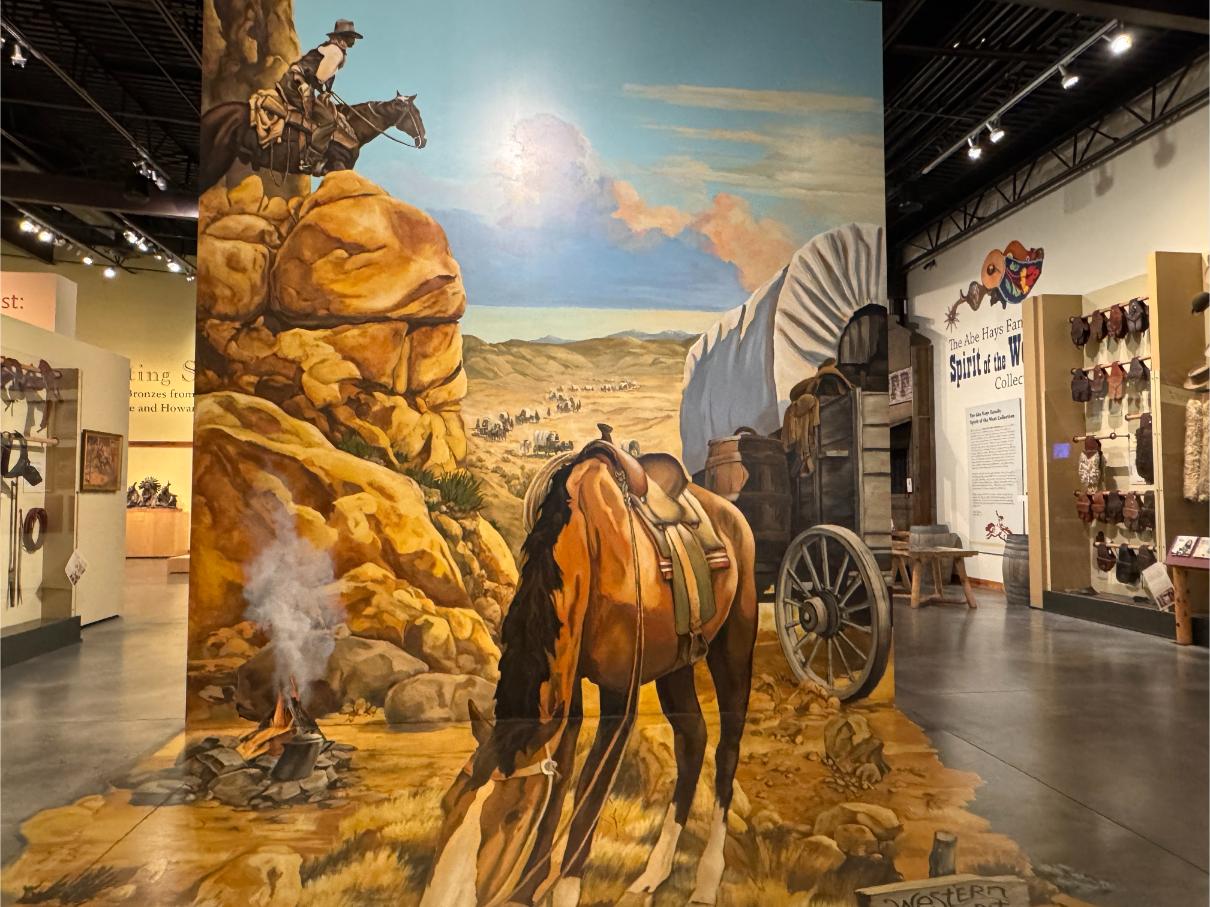
The scene is set. Photo by Debbie Stone
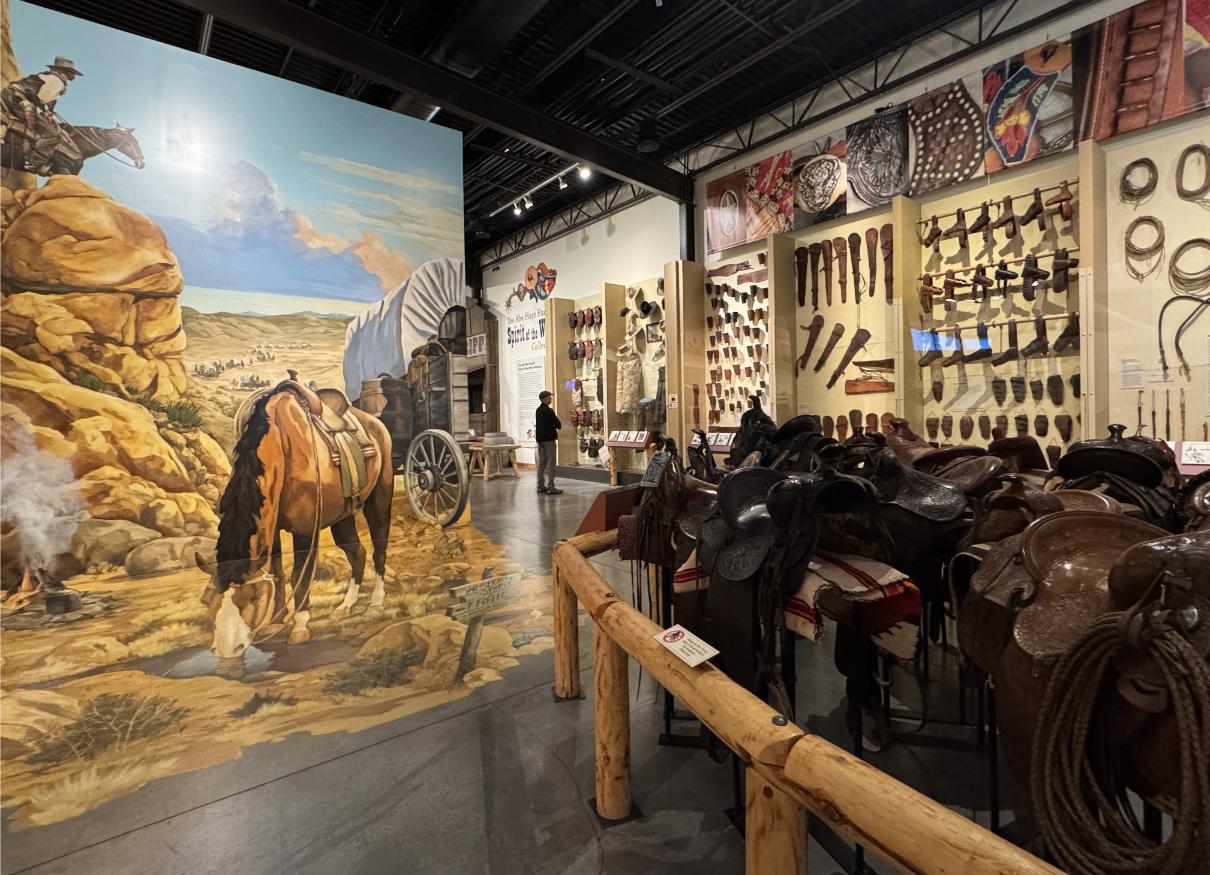
This is one impressive collection! Photo by Debbie Stone
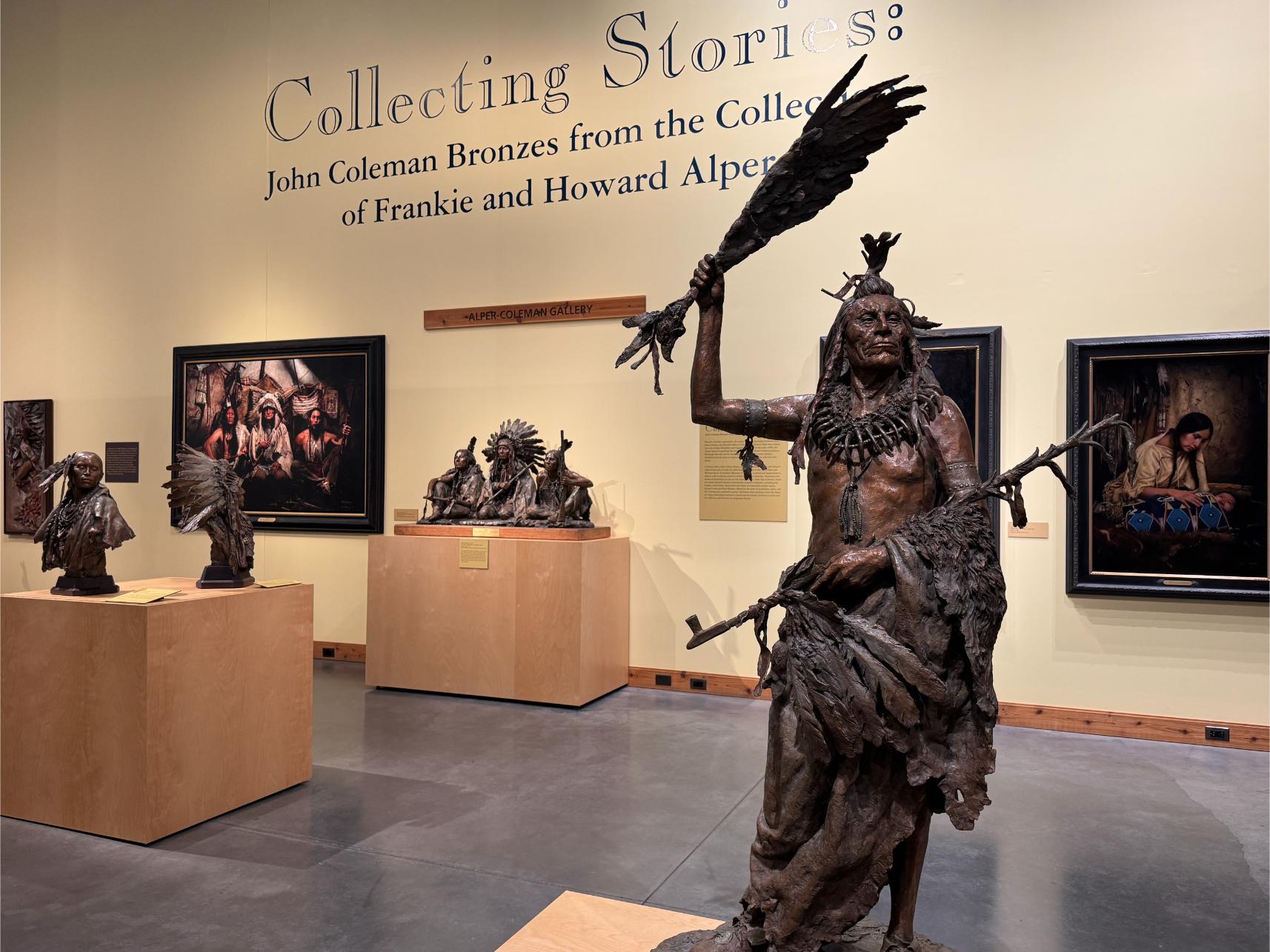
The detail in these bronze sculptures is remarkable. Photo by Debbie Stone
You’re guaranteed to be impressed by the works in “Collecting Stories: John Coleman Bronzes from the Collection of Frankie and Howard Alper.” Acclaimed Western artist John Coleman’s pieces are magnificent. Of special note is his ten-piece “Explorer Artist Series,” inspired by the 19th century paintings and portraits of George Catlin and Karl Bodmer. These artists documented the American Indian in the environment in which they lived, offering viewers insight into what these people looked like and how they lived.
Coleman pays tribute to these artists and their contributions to Western Art, as well as to their subjects, through his striking, life-like sculptures. His attention to detail and his ability to capture the anatomy, the textures of the clothing, facial expressions and more is remarkable.
In “Courage & Crossroads: A Visual Journey through the American West,” artworks from The Peterson Family Collection span more than a century of Western art. On display are more than 100 paintings and sculptures depicting the American West in the 19th and early 20th centuries, along with photographs, memorabilia and rare Native American art and artifacts, such as quilled moccasins and a painted buffalo robe. Look for Meriwether Lewis’ pipe tomahawk, too!
Artists represented include such notables as Thomas Moran and Frederic Remington, as well as photographer Edward S. Curtis. You will walk away with indelible images that capture the imagination of life in the American West.
One of the most popular galleries is “The A.P. Hays Spirit of the West Collection.” Here you’ll find a vast collection of Old West items, from a variety of guns and knives to saddles, holsters, spurs, chaps, sheriffs’ badges and much more. Central themes include Working cowboys; Wild West Shows: Western Gear Made in Prisons: Rodeos and Fairs: Western Movies and Parades: Outlaws and Lawmen; Western Saloons; and Illustrations.
For over fifty years, Abe Hays collected authentic artifacts from craftsmen in nineteen states. His collection is extraordinary! Facades of a sheriff’s office, saloon and hotel provide a colorful backdrop to these treasured items. And there’s even reels of Western films running to complete the scene.
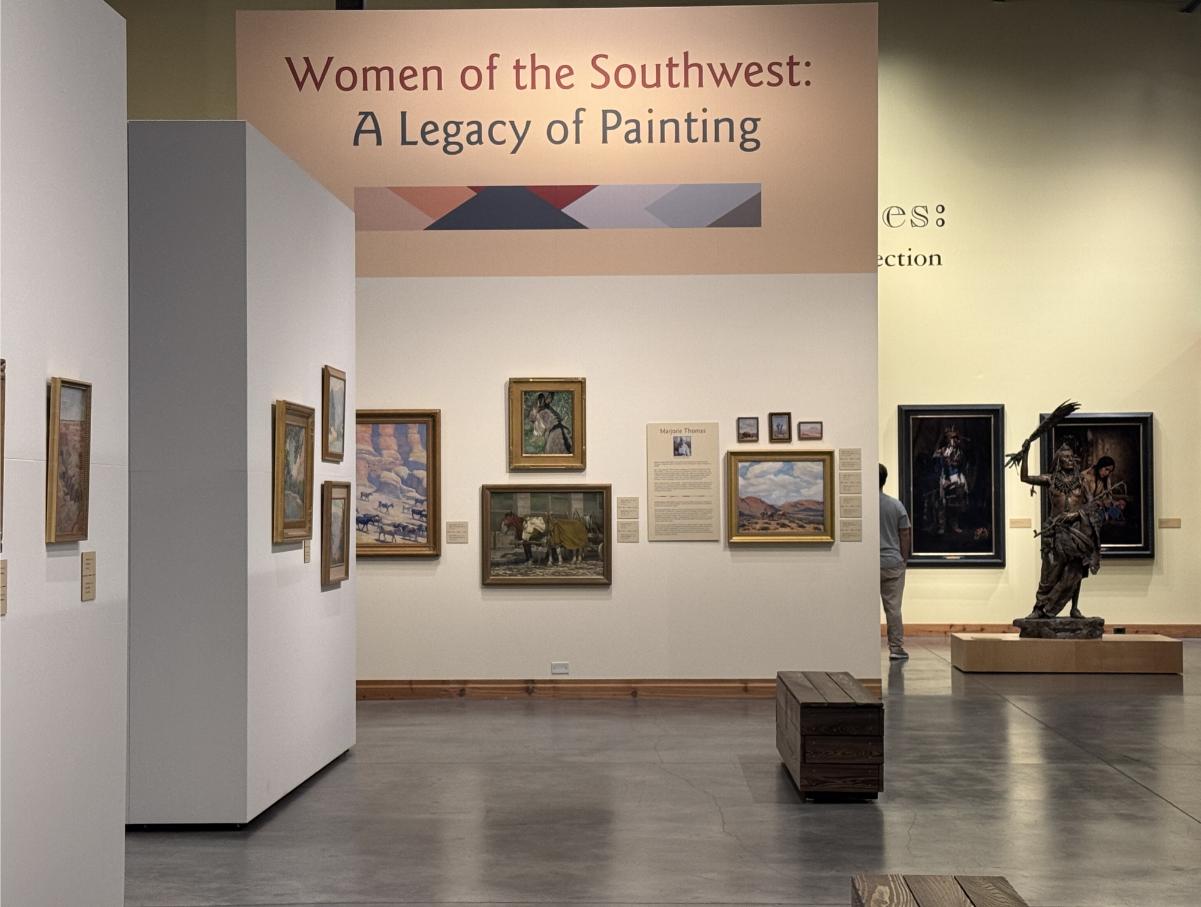
Women painters take centerstage in this gallery. Photo by Debbie Stone
As someone who lived in Alaska for a number of years, and whose husband helped train sled dog teams for an Iditarod musher, I particularly enjoyed “Veryl Goodnight: Sled Dogs in America: Alaska & Beyond.” In this exhibit, Goodnight, an award-winning wildlife painter and sculptor, vividly tells the stories of sled dogs and their drivers, presenting the many roles both have played in American history. Her work highlights the partnership and the bond between humans and dogs through the decades.
You’ll learn that sled dogs served as a primary means of transportation and communication in the Far North. These brave and intrepid canines ferried people, delivered mail, moved freight and supplies across icy, snow covered ground in subzero temps. They were vital to the survival of those who lived in this region and regarded not as animals, but almost human.
One of the most notable sled dog endeavors happened during the 1925 diphtheria outbreak in Nome, Alaska. Teams of sled dogs transported a vital anti-toxin to the sick residents of the town, traveling almost 700 miles in six days.
Featured in this exhibit are paintings that depict the Klondike Gold Rush dogs made famous in Jack London’s writings, those accompanying Hudson Stuck and Harry Karstens on the first successful summit of Denali in 1913, the dogs of the Denali Canine Park Patrol who carry park rangers and haul supplies in Denali National Park in Alaska and more. Accompanying the work are props that the artist used in the creation of her art alongside historical information that narrates the stories behind these remarkable creatures and their courageous handlers.
Western Spirit: Scottdale’s Museum of the West
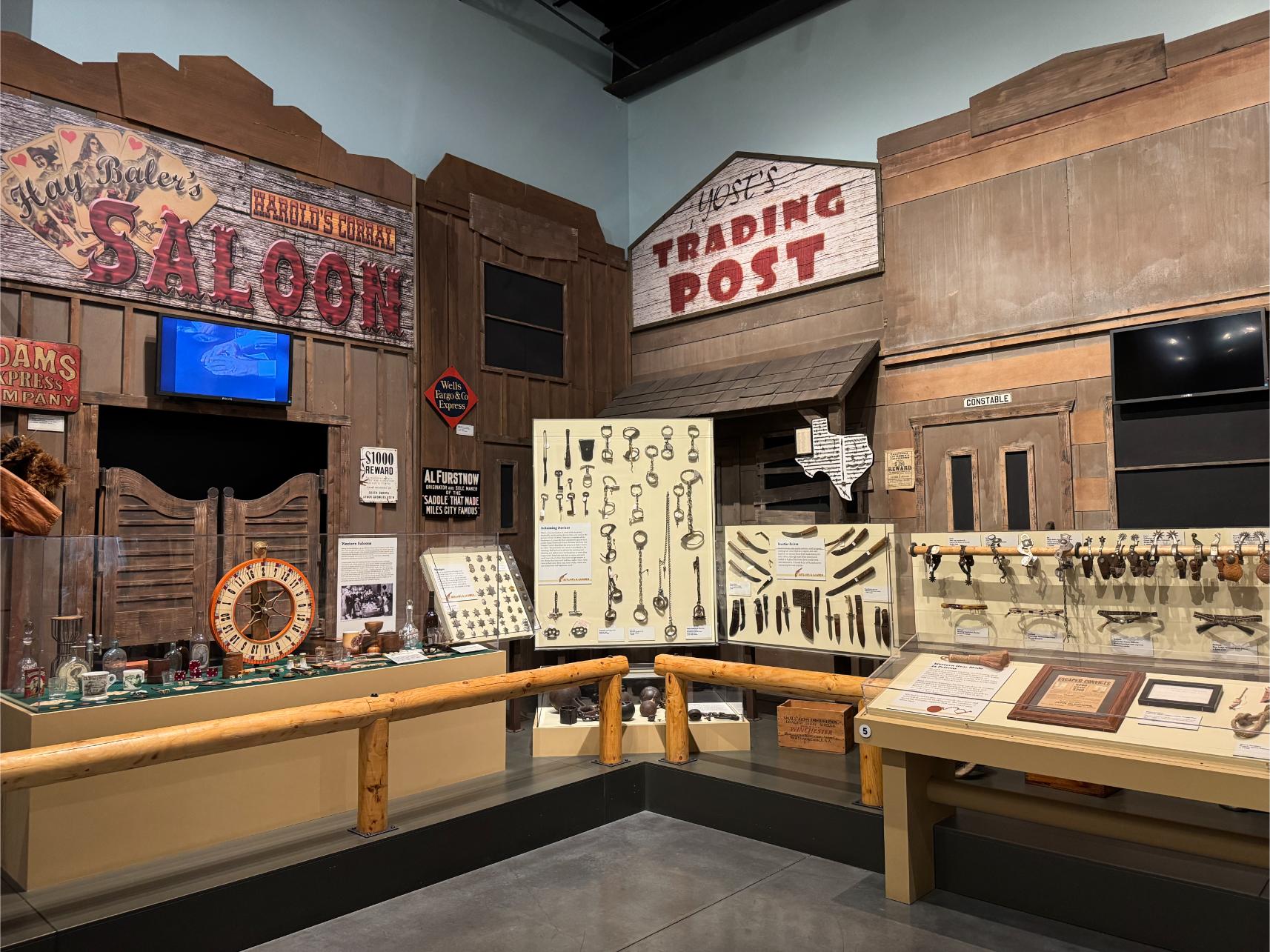
You’ll find everything Old West here! Photo by Debbie Stone

